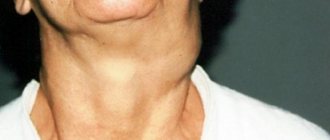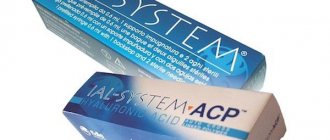Herpes zoster (shingles) occurs as a result of reactivation of the varicella-zoster virus.
- Herpes zoster
- Symptoms
- Treatment
- Our doctors
- Price-list
- Analyzes
- Make an appointment
- Questions and answers
Pathogen
— DNA-containing virus of the herpes group.
It is highly contagious, but occurs in the majority of the population (more than 90%) before reproductive age. Typical skin lesions are characteristic: a spotty rash, turning into a vesicular rash, then a pustular rash with the formation of crusts and scratches. A disease in adults - reactivation of a latent viral infection, manifested by a painful blistering rash along the nerves - “shingles”, herpes zoster .
Chicken pox
is a primary infection caused by the varicella-zoster virus. In children (90% of the disease occurs before the age of 13), the disease is relatively mild; in adults it can be complicated by encephalitis and pneumonia.
Reasons for virus activation
The triggering factor for the proliferation of Varicella zoster and its release from the nerve ganglia is considered to be a decrease in the body’s immune defense. Physiological suppression of the immune system is observed in older people, and temporary disturbances in the functioning of the immune system occur with acute and chronic diseases, stress, poor low-calorie diet, mental and physical stress.
Patients at risk are:
● with congenital and acquired immunodeficiencies;
● taking immunosuppressive therapy;
● receiving courses of chemoradiotherapy;
● have undergone bone marrow transplantation or internal organ transplantation.
Causes of herpes zoster in adults
Doctors are unanimous in their opinion that the cause of the disease is a weakened immune system, in which the body’s defenses are not able to cope with the activity of the virus. Therefore, when type 3 herpes recurs, first of all, the causes of the malfunction in the immune system are determined. These include:
- oncological diseases and related radio and radiation therapy;
- surgical interventions, including organ transplantation;
- HIV AIDS;
- antibiotics and medications that kill the body’s protective functions;
- depression, stress;
- hypothermia or overheating.
Shingles itself is a non-contagious disease. But a sick person is the source of the chickenpox virus. Therefore, for anyone who has not had this childhood infection, any contact with someone suffering from lichen is strictly contraindicated. Otherwise, this is almost a 100% guarantee of catching chickenpox. The disease can be transmitted in several ways: airborne, household contact and transplacental (from mother to child during pregnancy and childbirth). The patient poses a danger to others the entire time he develops new blisters.
How to recognize herpes zoster?
The disease begins with prodromal phenomena: malaise, increased body temperature, decreased performance. Patients complain of tingling, numbness, burning in limited areas of the skin, in the area of which severe pain occurs after a few days.
The period of advanced clinical manifestations begins with a sharp rise in temperature. Against the background of fever, pink spots with a diameter of up to 5 mm appear on the skin, which within a day turn into bubbles with transparent contents, and then shrink into crusts. The rashes are located on one side of the body, most often on the skin of the chest or face. They have a characteristic localization due to the course of the affected nerve.
Infection
Herpes zoster is transmitted by airborne droplets. The virus enters the respiratory tract, where it replicates; sometimes the virus invades the lymph nodes, causing primary viremia. The virus subsequently spreads within the body through hematogenous, lymphogenous and neurogenic routes, infecting the sensory ganglia of the autonomic nervous system, which practically ensures its lifelong persistence in the human body. The incubation period is 10-20 days (13-17). In children, fever and rash appear simultaneously. In adults, malaise and fever appear several days before the rash. The rash begins on the face and head, spreads to the torso, and rarely affects the extremities. Its development is accompanied by itching. New rashes appear after 2-5 days, all elements of the rash exist simultaneously.
Atypical forms of the disease
In some cases, the course of herpes zoster differs from the classical pattern, which makes timely diagnosis difficult. There are several forms of Herpes zoster:
1. Abortive. It has minimal clinical manifestations: malaise, weakness, redness and swelling of the skin without rashes. The duration of the illness does not exceed several days.
2. Bullous. Skin symptoms include flaccid blisters the size of a pea or larger, which are filled with clear fluid. This type of herpes zoster is accompanied by severe intoxication.
3. Hemorrhagic. Develops in patients with a suppressed immune system. In this case, the lesion affects the deep layers of the skin: the blisters are filled with bloody contents, and dark brown crusts appear.
4. Gangrenous. Another variant of Herpes zoster, typical for elderly and weakened patients. Skin inflammations do not heal for a long time, turning into ulcers that leave behind rough scars.
5. Generalized. It is characterized by the spread of a herpetic rash over a large area of skin beyond the zone of innervation of one nerve. This form is observed in immunocompromised patients.
Symptoms of herpes zoster
Herpes zoster is characterized by rashes along individual sensory nerves of fuzzy pinkish spots (3-5 cm in diameter), against which after 18-24 hours groups of painful vesicles form; the main feature that distinguishes them from other herpetic skin lesions is the presence of a clear demarcation zone. Most often, lesions are localized on the chest, but can also be located along any sensory nerve and, as a rule, are unilateral. The lesions disappear within 2-4 weeks, but pain (neuralgia) may persist for weeks or several months. Contagiousness: 1-2 days before the rash and until the crusts fall off. Complications include secondary bacterial skin infection, as well as encephalitis, meningitis, myocarditis, glomerulonephritis, and arthritis (rare). A very serious complication is pneumonia, which increases the risk of mortality: in adults up to 5-10%.
Which doctor should I contact?
For classic herpes zoster with skin rashes, a consultation with an ID-Clinic dermatologist is required. The doctor will conduct an initial diagnosis and, if necessary, give a referral to a neurologist or infectious disease specialist. To make a diagnosis, the patient will need to undergo an extensive examination.
Taking into account the results obtained, the doctor selects an individual treatment regimen using antiherpetic drugs, painkillers and other medications. With timely initiation of therapy, the prognosis is favorable.
Treatment of herpes zoster
INITIAL CONSULTATION
from 2,500 rub.
Medical care for patients with herpes zoster in the acute period is provided by a dermatovenerologist, whose tasks include prescribing antiviral acyclovir-containing drugs orally in tablets. Antiviral drugs should be prescribed as early as possible from the onset of the disease, observing the single and daily dose of the drug and the duration of treatment. The second task of a dermatovenerologist is to treat the lesion. For this purpose, various drugs are used for external use, both antiviral and other mechanisms of action.
The most common complication of herpes zoster
is sympathoglioneuritis, which manifests itself as a persistent, long-lasting pain syndrome. This is postherpetic neuralgia, which is treated by a neurologist.
Methods for preventing herpes zoster
In patients with reduced immunity, in case of contact with a patient with chickenpox, it is recommended to administer human immunoglobulin or immune plasma. The drugs reduce the risk of developing shingles, but they are most effective when used within the first 96 hours after exposure.
Vaccination against herpes zoster with the Zostavax vaccine can be carried out in people over 60 years of age. It is performed once and reduces the risk of developing Herpes zoster by 51%, and also reduces the intensity of pain by 61%, and the likelihood of postherpetic neuralgia by 66.5%.
Shingles (herpes zoster)
Shingles
Shingles, or herpes zoster (lat. Herpes zoster), is a viral infection caused by one of the representatives of the Herpesviridae family.
Special mention should be made about the pathogen: it is human herpesvirus type 3, Varicella zoster virus (VZV) or, more simply put, the causative agent of chickenpox. Chickenpox is notorious for being extremely contagious and virulent; rapidly spreading literally through the air (for which, in fact, the disease got its name), the VZV virus affects everyone who has not previously been ill and does not have immunity. However, this is not the only distinctive feature. At the end of the 19th century, it was noticed that an epidemic of chickenpox often arises around a person who gets shingles. These two diseases are so different clinically that it was quite difficult to assume a single etiology, but, nevertheless, in the second half of the twentieth century, the etiopathogenesis of herpes zoster was clearly clarified. As it turned out, the immune system, which successfully overcomes the chickenpox clinic, still fails to destroy the virus completely; in a person who has recovered from the disease, it simply goes into a latent, passive, “sleeping” state, surviving in the nerve ganglia and plexuses. And only under a certain combination of conditions (see below), favorable for the virus and unfavorable for its carrier, Varicella zoster virus is activated again, causing a serious polysymptomatic neuroinfectious disease. In general, it is not for nothing that viruses of the herpetic family bear the ancient Greek name “creeping” - they are excellent at “crawling into a hole” and then, sometimes decades later, take advantage of the weakness of the host organism and inflict a sudden, painful, very dangerous blow. The formulation of the diagnosis “herpes zoster” etymologically goes back to the name of the ancient combat chain mail that covered the groin area, stomach and chest (sometimes zoster is described as a wide belt or belt). A characteristic skin lesion that develops along large nerves was observed by healers in ancient times, and the disease was probably named for its association with skin chafing and inflammation that appears when wearing tightly fitted armor for a long time. It is interesting that in completely different cultures and languages, shingles received similar, and very eloquent, names: Arabic “belt of fire”, Spanish “snake trail”, Norwegian “hellfire”, etc.
Shingles, unlike chickenpox, was considered a very rare disease for a long time, and only with the development of modern approaches to epidemiological research, registration and statistical analysis of diseases, it was possible to clarify the true picture of prevalence. However, even today the data differ, without this there is no epidemiology (the results of various studies differ depending on the formulation of the problem, the applied inclusion and exclusion criteria, etc.). Domestic sources usually report incidence at the level of hundredths of a percent for the general population, and tenths of a percent for the elderly. Western sources estimate the prevalence much more pessimistically: according to these estimates, approximately every third person will experience certain symptoms of Herpes zoster throughout their life; the probability of developing any clinically significant form of herpes zoster (see below) for younger and adult categories of the healthy population is 0.1-0.4%, but for people over 65 years of age the risk increases to 0.5-1.2% .
Symptoms of herpes zoster in adults
Shingles has two forms - typical and atypical, which manifest themselves in different ways.
Typical form. There are 3 stages, each of which is characterized by its own set of symptoms:
- The first stage lasts from 2 to 4 days. The patient begins to be bothered by painful sensations of the neuralgic type, tingling, burning, itching in the place where rashes soon form. Often there is a disorder in the function of the gastrointestinal tract, the temperature rises to 39 ° C, and the lymph nodes enlarge.
- The second stage is characterized by the appearance of a rash. First, red spots of different sizes appear - up to 5 mm. After 3-4 days, bubbles (vesicles) form. This process is also accompanied by pain and itching.
- The third stage occurs when crusts begin to form in place of the bubbles. Over time, they dry out and fall off. With herpes zoster, skin lesions heal in 10 to 14 days. But neuralgic manifestations remain.
Atypical form. In this case, shingles can be expressed in several different types:
- Mild (abortive) - vesicles are not formed, the disease manifests itself only as neuralgia.
- Severe (gangrenous) - usually occurs with catastrophic immunodeficiency. It is characterized by very profuse rashes that surround the affected part of the body, constantly changing movement. More and more new rashes appear.
- Blistering - vesicles grow in size, seem to unite and form rashes of significant area, with uneven edges.
- Generalized - in case of serious disorders of the immune system, following typical rashes, herpes type 3 affects large areas of the skin and mucous membranes.
- Bullous - vesicles unite into single large papules.
Shingles is also classified according to location, distinguishing gangliocutaneous (the most common), ophthalmic, ear and other forms.
In the typical form of shingles, red spots of varying sizes first appear, and after 3-4 days blisters form. Photo: Wikipedia, Globallookpress.
In the typical form of shingles, red spots of varying sizes first appear, and after 3-4 days blisters form. Photo: Wikipedia, Globallookpress.
In the typical form of shingles, red spots of varying sizes first appear, and after 3-4 days blisters form. Photo: Wikipedia, Globallookpress.







